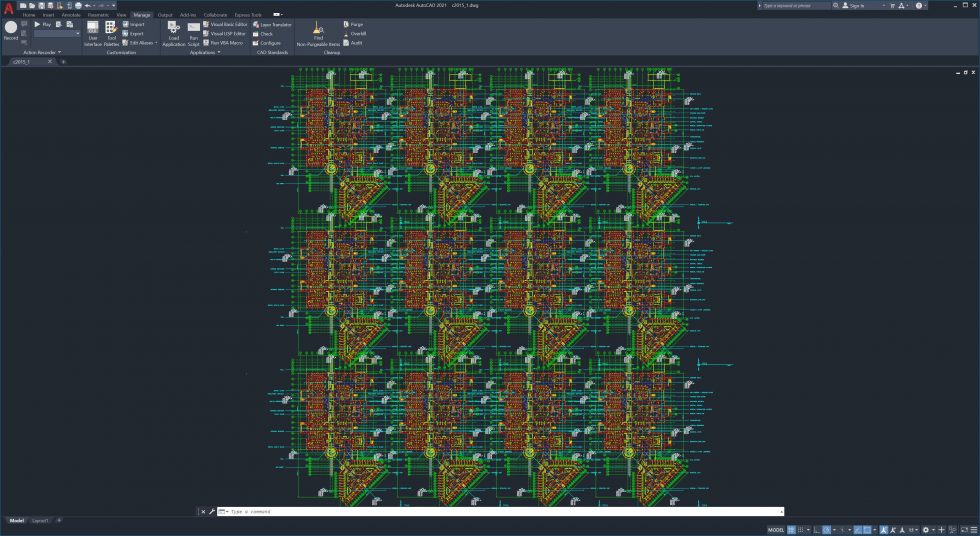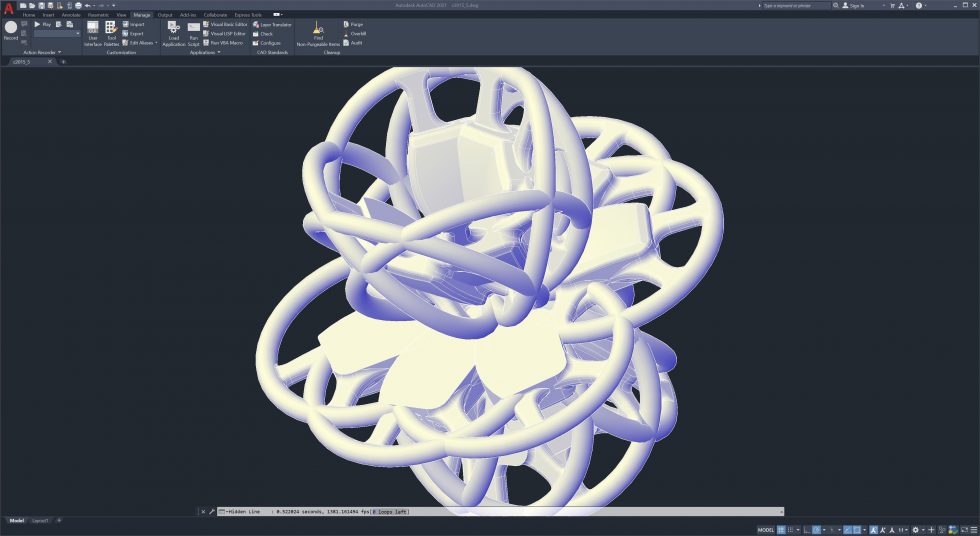AutoCAD 2023 with the modified Cadalyst benchmark suite
Autodesk AutoCAD 2024 is one of the latest versions of the globally recognized 2D and 3D CAD design tool. It provides architects, engineers and construction professionals with powerful tools to create accurate drawings and models. AutoCAD 2023 came with improved drawing tools, enhanced geometry creation features and detailed annotation capabilities. The software also has improved collaboration features, particularly through integration with the Autodesk Cloud, making it easier to share projects and work together. Enhanced visualization options allow users to present their designs realistically, and the user interface has been further optimized to speed up the workflow and improve the user experience. And then came Intel and the four profiles…
The performance tests consist of a lot of 2D and some 3D-heavy workloads, explicitly avoiding CPU-based rendering. So all the workloads are rather an easier task, aren’t they?
There is hardly any difference between the profiles in the 2D and 3D areas, whereby only the Insane profile really offers the highest clock rates. If we take the Baseline profile as the 100 percent mark, then the overall performance for the Insane profile increases by an almost negligible 4.5 percent, while the Performance profile only increases by 0.5 percent and the Extreme profile by 1.9 percent. The bottom line is that the gain for the two new profiles proposed by Intel is more of a zero.

Let’s now take a look at the individual results, where we can see where potential problems lie. Above all, the 3D performance is only slightly better in the Insane profile, otherwise the differences are more in the area of measurement tolerances. However, the simple shading used by AutoCAD is not something that really utilizes the GPU, so the CPU also has to deliver a lot here.

2D performance is also extremely dependent on the CPU, because all basic geometric functions have to run through the driver first due to the lack of separate hardware acceleration and are therefore calculated by the CPU. But even there it is only 4.6 percent more for the Insane setting than in the baseline profile. Silly and not noticeable. At most at the socket.

The CPU index makes the real difference, whereby various CPU-based measurements are included here (except for disk performance, which I am not showing here due to the too small differences and too high random rates). That’s a whole 9.6 percent advantage for the Insane mode compared to the baseline profile. Will you even notice this subjectively when working? No. Performance and Extreme are almost on a par, with the Performance profile being around 5 percent faster and the Extreme profile around 6 percent faster.





































128 Antworten
Kommentar
Lade neue Kommentare
Urgestein
Veteran
Urgestein
1
1
Urgestein
1
Urgestein
1
Veteran
Veteran
Veteran
Urgestein
Urgestein
Urgestein
Urgestein
Veteran
1
Veteran
Alle Kommentare lesen unter igor´sLAB Community →